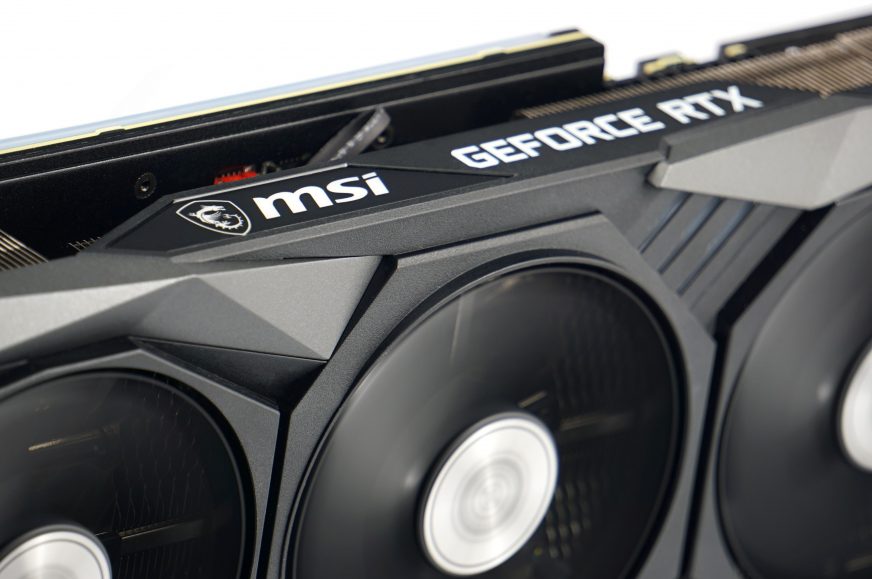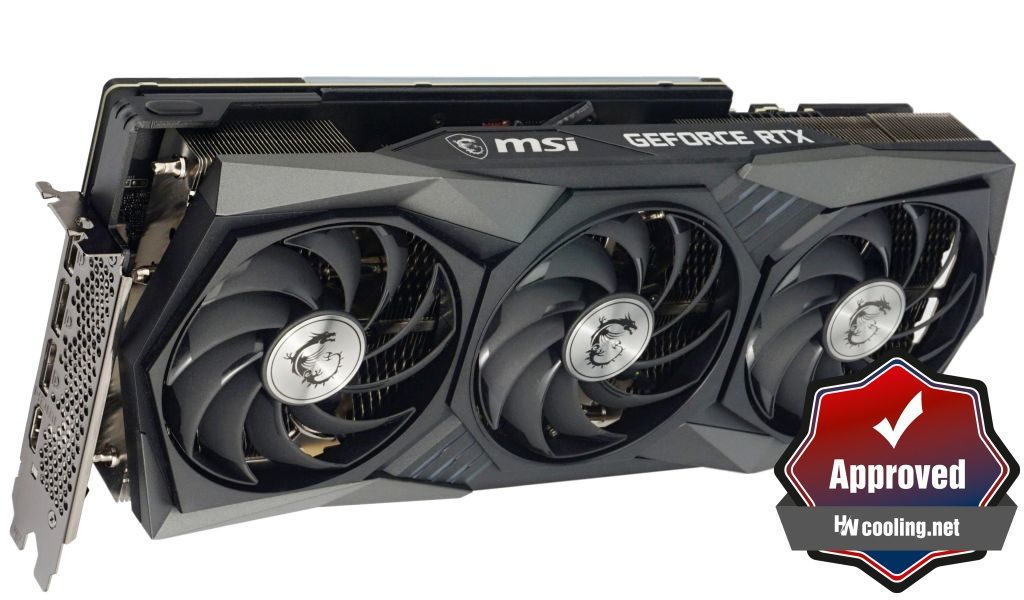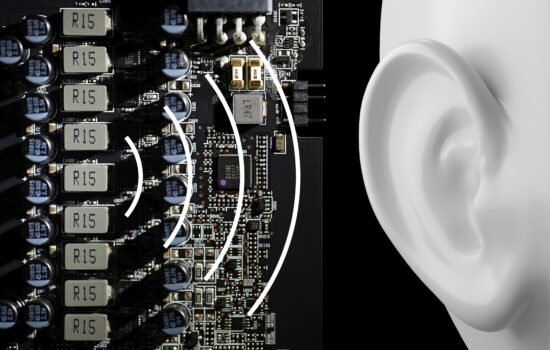Conclusion
The availability of more powerful graphics cards for common consumers is lousy, but if you are lucky enough to get one, it will most probably be equipped with a GPU GA104-300-A1, which is in the GeForce RTX 3070. Most cards have this GPU and one of the most attractive is the MSI Gaming X Trio with Tri Frozr 2 cooler. It is really oversized and thanks to it, this graphics card significantly exceeds the reference boost. And is also pretty quiet while doing so.
Conclusion
Compared to the RX 6800, the RTX 3070 lags a bit behind in most performance tests, even without active SAM. Although the overall performance graphs suggest something a little different. Only CS:GO gets the RTX 3070 into positive green numbers, running very fast on the GeForce and the exactly opposite way on the RX 6800 (SAM off). In FHD and QHD resolutions, the Radeon even reaches almost only half fps (yes, we will soon apply the new metric, where the average performance will be calculated in a way so that each game has the same weight). Otherwise, the RTX 3070 Gaming X Trio more or less scores lower in most games.
We recorded losses of more than 12% compared to the RX 6800 in games such as Assassin’s Creed: Valhalla (even up to 19–24%), Battlefield V without DXR or Borderlands 3. And then there are titles, where the performance difference fits in between 8–10% and is many times higher only in UHD (2160p). This includes games like DOOM Eternal (-18%) or F1 2020 (-14%). However, these are titles where the fps are still high (above 90), and also suitable for faster monitors. In FIFA 21, the RTX 3070 keeps up and is still in lead compared to the RX 6800. In Cyberpunk 2077 with FidelityFFX CAS the performance is balanced, but a comparison with the RTX 3080 is remarkable to see here, where it loses by 26–50%. The higher the resolution, the greater the percentage drop. This is the case in general, and on average the framerate is a quarter lower than with the TUF RTX 3080 with performance BIOS mode. But the GPU clock speed is really high here (1912–1961 MHz) even for the RTX 3070. After all, the smaller and slower VRAM is noticeable here.
The reviewed RTX 3070 overtakes the RX 6800 for example in Mafia: DE (by 4–10%) and always with DXR on (ray-tracing graphics). For example, in Shadow of the Tomb Raider it’s faster by 2–11%, in Battlefield V by 6–12%, in Metro Exodus by 12–14% and in Control by up to 34–41%. Then there are games where you can’t tell the difference, like in Cyberpunk 2077, Forza Horizon 4 or Red Dead Redemption 2 (only using Vulkan, Dx12 suits AMD more).
For players who do without RT, the RX 6800 is more advantageous. It has a higher performance at a 30–35 W less power draw. And for non-gaming purposes, of course, for everyone who needs a fast render using CUDA. Here, however, it is worth adding that slower OpenCL in Blender does not mean worse efficiency, it is very similar. Although the RX 6800 has lower performance, it also adequately uses less power.
Either way, it must be admitted that MSI did a great job with the RTX 3070 Gaming X Trio. This graphics card is significantly quieter (almost by up to 10 dBA!) than the more power-efficient reference Radeon RX 6800. Not only in terms of fans, but also the coils, which are also among the quieter, although not the quietest. Overall, however, the RTX 3070 Gaming X Trio is a very quiet graphics card, which also excels in low temperatures. But the tax for these properties is the larger dimensions. There are no extremes for which you would not find a suitable PC case though. Collision with other components may only occur in unique situations. But of course it’s also wise to watch out for them.
| MSI RTX 3070 Gaming X Trio |
| + High performance (optimal for gaming in QHD, 2560 × 1440 px resolution) |
| + Higher ray-tracing graphics performance compared to the RX 6800 |
| + Nice effectiveness (performance per watt) |
| + Effective cooler Tri Frozr 2 – low temperatures |
| + Quiet operation (low fan and coil noise) |
| + Favorable overall price/performance ratio (i.e. including DXR and DLSS) |
| + Exclusive DLSS (2.0), CUDA and OptiX support |
| + PCI Express slot holder included in the package |
| + Appealing RGB LED lighting and we’ve checked it’s also very power-efficient |
| - Lower effectiveness (performance per watt) than the competing RX 6800 |
| - Worse price/performance ratio in terms of non-RT graphics compared to the RX 6800 |
| - Greater card depth with possible collision in smaller PC cases |
| - Unavailability |
Thank you to Spacebar for providing us with games for our tests
- Contents
- MSI RTX 3070 Gaming X Trio – details
- Specification table
- Methodology: performance tests
- Methodology: how we measure power draw
- Methodology: noise and sound measurement
- Methodology: heat tests
- Test rig
- 3DMark
- Age of Empires II: DE
- Assassin’s Creed: Valhalla
- Battlefield V
- Battlefield V with DXR
- Borderlands 3
- Control
- Control with DXR and DLSS
- Counter-Strike: GO
- Cyberpunk 2077
- Cyberpunk 2077 with DLSS and FidelityFX CAS
- Cyberpunk 2077 with DXR, DLSS and FidelityFX CAS
- DOOM Eternal
- F1 2020
- FIFA 21
- Forza Horizon 4
- Mafia: DE
- Metro Exodus
- Metro Exodus with DXR and DLSS
- Microsoft Flight Simulator
- Red Dead Redemption 2 (Vulkan)
- Red Dead Redemption 2 (Dx12)
- Shadow of the Tomb Raider
- Shadow of the Tomb Raider with DXR
- Total War Saga: Troy
- Wasteland 3
- Overall game performance and performance per euro
- CompuBench (OpenCL)
- CompuBench (CUDA)
- SPECviewperf 2020 and SPECworkstation 3
- FLOPS, IOPS and memory speed tests
- 3D rendering 1/2 (LuxMark and Blender@Cycles)
- 3D rendering 2/2 (Blender@Radeon ProRender and Eevee)
- Photo editing (Adobe Photoshop, Lightroom and Affinity Photo)
- Broadcasting (OBS and Xsplit)
- Password cracking
- GPU clock speed
- GPU heating
- Net graphics power draw and performance per watt
- Analysis of 12 V subcircuit power supply (higher load)
- Analysis of 12 V subcircuit power supply (lower load)
- Analysis of 3.3 V subcircuit power supply
- Noise level
- Frequency response of sound
- Conclusion













